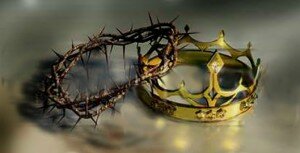 It’s Advent, and I have a plan. Each Sunday in Advent, I’ll post some thoughts on the beginnings of the four Gospels. Each Gospel introduces the arrival of Jesus in strikingly different ways, and it’s worth a look! Today, Matthew!
It’s Advent, and I have a plan. Each Sunday in Advent, I’ll post some thoughts on the beginnings of the four Gospels. Each Gospel introduces the arrival of Jesus in strikingly different ways, and it’s worth a look! Today, Matthew!
What a way to start a book…
Have a look at the opening verses of Matthew’s Gospel. Go on, take a look. It starts with this:
“This is the genealogy of Jesus the Messiah the son of David, the son of Abraham:”
A genealogy? Really?! But he’s not kidding – he goes on to list 38 names in the family line of Jesus. It wouldn’t get published today – it’s not a way to grip your readers (unless you’re Tolkien). This is the least exciting Christmas list in the world…
But in Jewish thought and culture, seeing someone’s family line was like seeing their CV. It told you what stuff they were made of. So, what are the credentials of Jesus? How good is his CV?
The magnitude of Jesus
On one level, this is a pretty good genealogy. Matthew starts with a BIG claim – “the Messiah the son of David, the son of Abraham”. Three big claims! But then he uses the genealogy to prove it.
He’s the Son of Abraham. Back in Genesis 12, Abraham was called by God, told he’d have a son, and that through his son the whole world would be blessed. On one level that son was Isaac, through whom the nation came. But the world was yet to be truly blessed by a son of Abraham. Matthew is saying, ‘Here he is! Look at first 14 generations of my genealogy – his roots go all the way back to Abraham’
He’s the Son of David. David was the king extraordinaire of Israel – the mighty leader who defeated Israel’s enemies and ushered in peace and prosperity for the people. David was good, but a better king was coming – they knew that. Someone from David’s line would once again rule. Matthew’s comment: that’s Jesus too!
Finally, Jesus is the Messiah, the promised one. Way back in Genesis 3 this person is promised, but hope rose highest when Israel were most in need, during their exile in Babylon. It was in their exiled years that the great hope for a messiah was stirred and great passages looking forward were written. Matthew can trace His roots from the exile too – he is rooted in that part of history too.
So he can finish with a summary, in v17:
“Thus there were fourteen generations in all from Abraham to David, fourteen from David to the exile to Babylon, and fourteen from the exile to the Messiah.”
In other words: ‘This guy’s the real deal. He has roots in all of it, and He’s the answer to all of it!’ It’s an impressive genealogy, for sure.
The messiness of Jesus
But this genealogy is odd, even weak, in one particular way. It includes women – this was just not done, except very rarely when a very impressive woman was part of the line. Not so here – the women here are anything but impressive.
In v4, we read of Perez, ‘whose mother was Tamar’. Judah’s first son was married to Tamar, but he died before giving her a child. As was custom, she waited for and married his next, but he also died. Instead of waiting again, she disguised herself as a prostitute, seduced Judah, her father-in-law, and produced Perez. Pain, heartache, prostitution and shame. Jesus stepped into that line.
In v5, we see Rahab’s name. Rahab was a prostitute, too. What little girl grows up hoping to spend her life selling her body to men who will use and abuse her for sex? This is a picture of broken dreams, hurt and deep sorrow. But Rahab is an ancestor of Jesus – he came from and for people exactly like her!
Also in v5, we get Ruth. Ruth is a lovely story, but that doesn’t hide the fact Ruth (like Rahab, actually) wasn’t Jewish. She was Moabite. Is it possible that Matthew includes her to make the outrageous claim that Jesus came not just for Jewish people but for everyone? Yes!
Finally, we read in v6 that ‘David was the father of Solomon, whose mother had been Uriah’s wife’. That sentence could carry on with ‘… until David was overcome by lust, forced an affair with her and had her husband killed.’ This is a story of lust, adultery and murder, a picture of much that is wrong with the world, of sin. Jesus didn’t bypass that when He came to earth – He stepped right into it.
The Jesus Matthew portrays is very messy – in touch with everything bad. He really did know our struggles.
Holding onto both
 There can be a tendency for us to focus too heavily on one part of this or the other. We celebrate the splendour of Jesus, the fulfilment of everything God had promised, the revelation of God’s complete purposes. Or we are thankful that God in Jesus identifies and came near little old me.
There can be a tendency for us to focus too heavily on one part of this or the other. We celebrate the splendour of Jesus, the fulfilment of everything God had promised, the revelation of God’s complete purposes. Or we are thankful that God in Jesus identifies and came near little old me.
Neither of these things is wrong, but what Matthew’s opener challenges me to do is hold onto both. I naturally swing to one part of that – you probably do too.
This Christmas, I am going to make an active effort to remember the majesty of Jesus and the messiness of Jesus. To remember the baby in the manger is the king of the world. To remember the king of the world stepped into the harsh realities of life.
Merry Christmas!


Pingback: Did the first Christmas happen? - Limping into Truth
Pingback: Say 'yes' to Christmas! - Limping into Truth
Pingback: The real meaning of Christmas - Limping into Truth
Pingback: